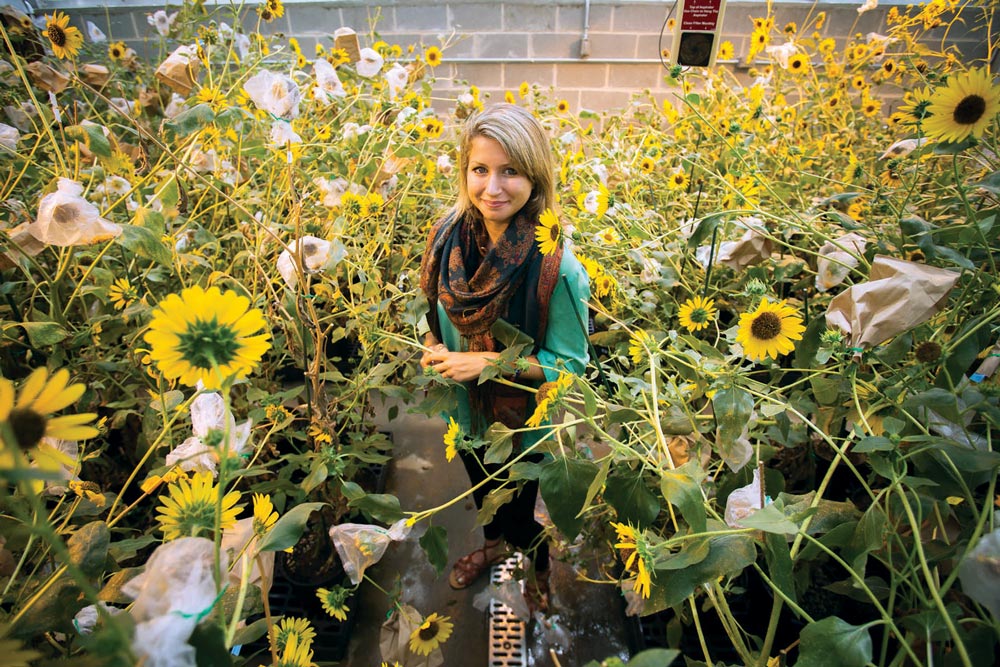Flower Power
How sunflowers can clean up the environment

After both the Fukushima and Chernobyl nuclear disasters, sunflower fields were planted across the affected areas. The tall flowers, native to the Americas, can absorb toxic metals and radiation out of the soil.
Rising fourth-year student Catie Kitrinos (Col ’15), a biology and anthropology major, is researching genetic variation in sunflowers as part of her Harrison Undergraduate Research Award, with the aim of mapping sunflowers’ ability to absorb heavy metals across its genome.
Over the course of the next year, she’ll help plant close to 1,700 sunflowers in the lab of assistant professor of biology Benjamin Blackman, testing between 250 and 280 genotypes for their ability to absorb zinc and copper, common elements found in fertilizers, pollution and runoff.
Her goal is to find the best sunflower breed to use in environmental cleanup.